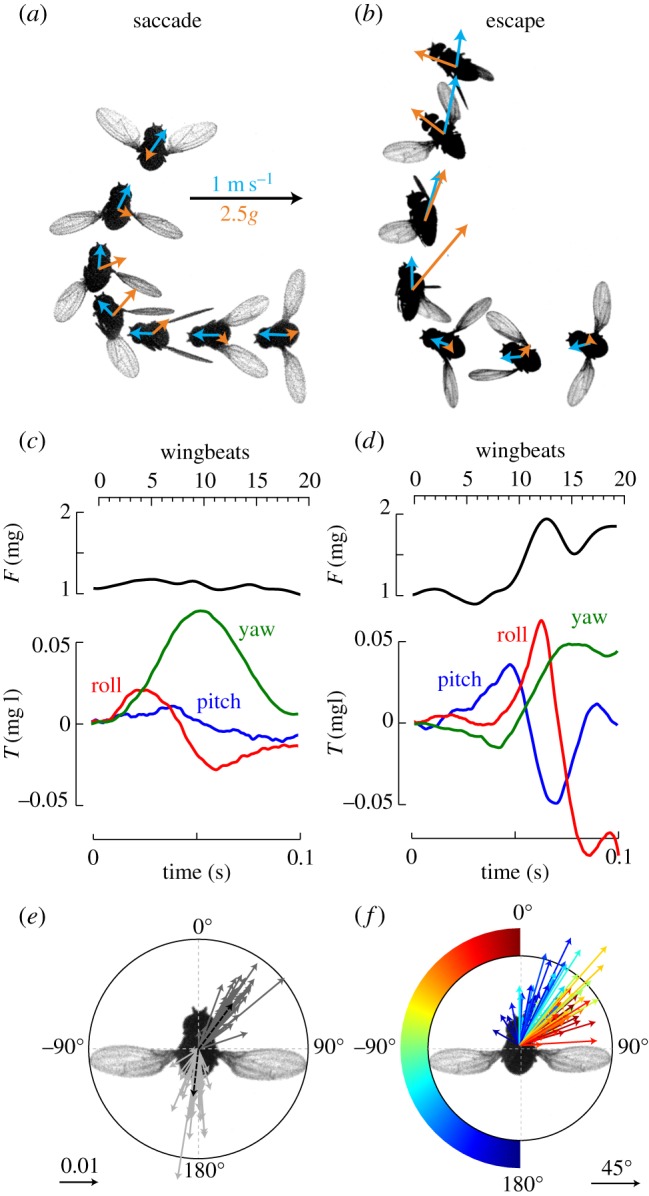Figure 2.

Body saccade and escape manoeuvre. (a) Photomontage from a high-speed video of a fly performing a saccadic turn adapted from [53]. (b) Photomontage of evasive manoeuvre elicited by looming visual stimulus adapted from [27]. In both (a,b), the fly changes course by approximately 90°. The instantaneous flight velocity (blue vectors) and the horizontal component of the aerodynamic force produced by the fly (orange vectors) are overlaid on each fly image. (c) Time course of the total aerodynamic force and body torques produced throughout the saccadic turn shown in (a). (d) Equivalent data for the escape manoeuvre shown in (b). Forces are normalized by body mass (mg) and torques are normalized by the product of body mass and wing length (mg l). (e) Torque vectors for the bank (dark grey) and counter-bank phases (light grey) of 44 body saccades, adapted from [53]. The length of each vector depicts normalized torque magnitude. The black dashed vectors depict the averages for all manoeuvres. (f) Vectors indicating magnitude and orientation of body rotation during the bank phase of 92 evasive manoeuvres, adapted from [27]. The colour of each vector indicates the position of the looming stimulus that elicited each trail.
